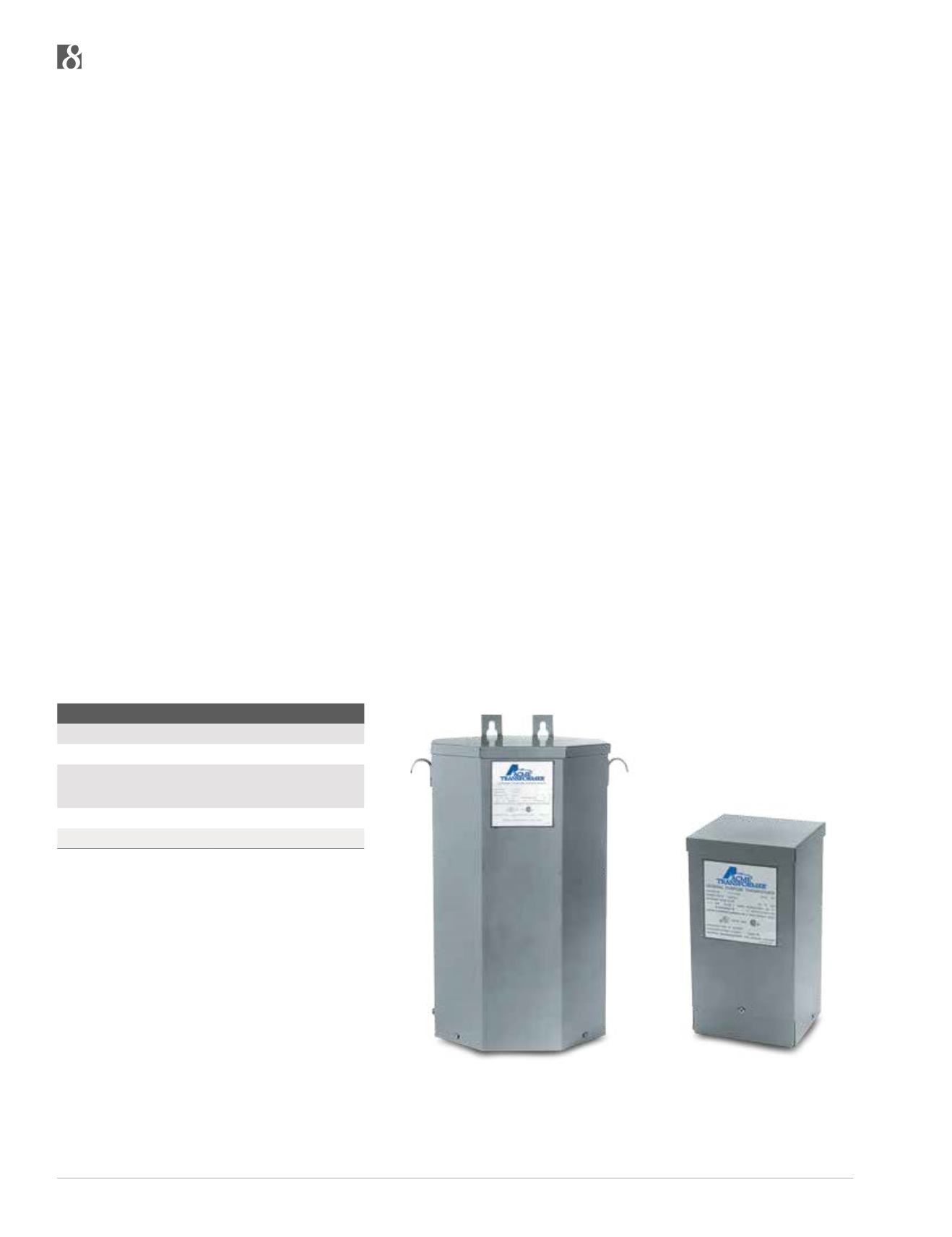

118
toll free 800.334.5214 ACME ELECTRIC |
hubbell-acmeelectric.comB u c k - B o o s t T r a n s f o r m e r s
Where are buck-boost transformers used?
A typical buck-boost application is 120 volts in, 12 volts out for low voltage lighting or control circuitry. In most applications, this low
voltage transformer is field connected as an autotransformer. (See question 2 for the definition of an autotransformer). Buck-boost
transformers provide tremendous capabilities and flexibility in kVA sizes and input/output voltage combinations. Basically you get
75 different transformers... all in one convenient package.
Other buck-boost applications are, where (A) low supply voltage exists because equipment is installed at the end of a bus system;
(B) the supply system is operating at or over its design capacity; and (C) where overall consumer demands may be so high the
utility cuts back the supply voltage to the consumer causing a “brownout.”
Why use buck-boost instead of another type transformer ?
Take a look at the advantages and disadvantages of using a buck-boost transformer (autotransformer) compared to a standard
isolation transformer of the proper size and voltage combination.
Proper voltage is critical
With nearly two-thirds of all electrical loads being A.C. motor loads, maintenance of the proper voltage to that motor is very
important. If the supply line voltage is not maintained, motor winding current is increased causing reduced motor torque and
escalating motor temperature, all of which results in the rapid loss of insulation life expectancy.
In addition to motor loads, the detrimental effects of low voltage on both resistive heating loads and incandescent lighting output
is illustrated in the chart.
Anytime you have a lower than standard voltage, equipment damage and failure can result.
Buck-boost transformers are an economical way to correct this potentially very serious problem. Anytime a line voltage change
in the 5-20% range is required, a buck-boost transformer should be considered as your first line of defense.
T211688
T111683
Advantages
Disadvantages
More efficient
No circuit isolation
Smaller & lighter
Cannot create a neutral
5-10 times increase in kVA
Application voltages and kVA
don‘t match the nameplate
voltages and kVA
Versatile, many applications
Lower cost


















